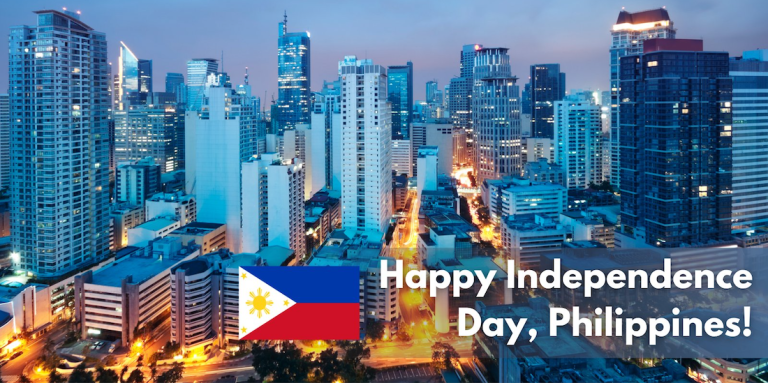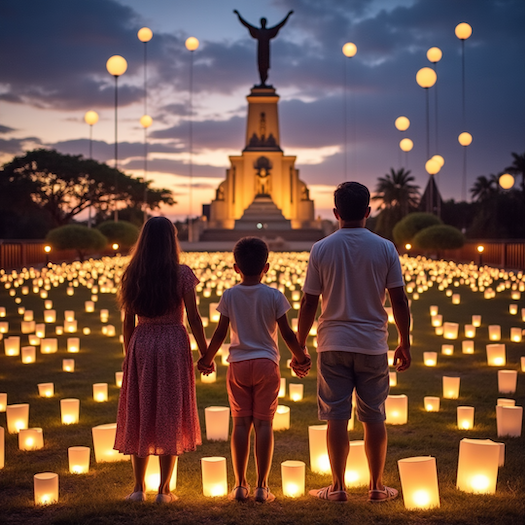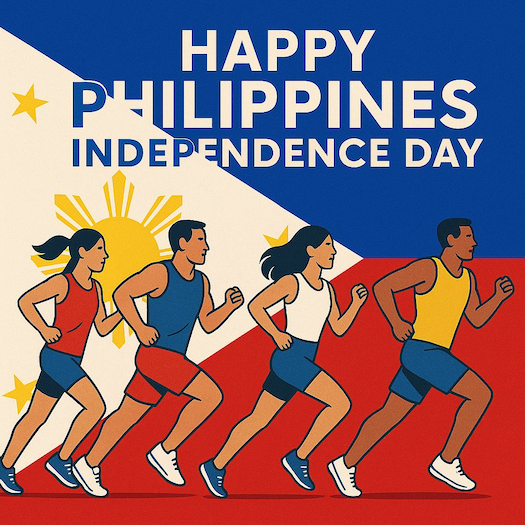
From Colonial Struggle to Modern Triumph, How June 12 Forges Philippine Identity Across Generations
New York, N.Y. — On a humid afternoon in Kawit, Cavite, on June 12, 1898, General Emilio Aguinaldo unfurled the Philippine flag for the first time. As the Marcha Nacional Filipina echoed, he declared independence after 333 years of Spanish colonial rule, igniting a revolution that would shape Asia’s first democratic republic. Though sovereignty faced decades of delay—through American occupation and World War II—this date now anchors the Philippines’ spirit of kalayaan (freedom).

The 1898 Revolution: Courage Against Empire
The road to independence began in secrecy. Andres Bonifacio, founder of the revolutionary Katipunan, scrawled “Viva la independencia Filipina!” in Montalban’s Pamitinan Cave in 1895, foreshadowing a bloody uprising. By 1897, Aguinaldo negotiated exile to Hong Kong under the Pact of Biak-na-Bato, only to return with U.S. naval support during the Spanish-American War.
On June 12, Ambrosio Rianzares Bautista read the Acta de la Proclamación in Spanish before 98 delegates and one American witness, Colonel L.M. Johnson. The declaration—ratified weeks later by 190 town leaders—asserted self-governance despite lacking international recognition. Yet, Spain’s cession of the Philippines to the U.S. in the Treaty of Paris triggered the Philippine-American War, delaying true autonomy until 1946.
1962: Reclaiming the Narrative
For 16 years, the Philippines marked independence on July 4, aligning with the 1946 U.S. grant of sovereignty. President Diosdado Macapagal upended this legacy in 1962, shifting the national holiday to June 12 via Proclamation No. 28. Historians argued the 1898 declaration embodied organic self-determination, not colonial bestowal.
“We were not truly free on July 4, 1946,” Macapagal asserted, framing June 12 as the restoration of Aguinaldo’s thwarted vision. The move also carried diplomatic symbolism—a subtle rebuke of unpaid U.S. war damages.

Modern Celebrations: Unity in Heritage
Today, Independence Day blends solemnity and spectacle. At Manila’s Rizal Park, President Ferdinand Marcos Jr. led 2025’s 127th anniversary, honoring heroes from José Rizal to Melchora Aquino 25. His speech championed democracy: “Criticism is not wrong. This gives life to our democracy.”
Nationwide traditions include:
- Flag-raising ceremonies at the Aguinaldo Shrine, replicating the 1898 moment.
- Military parades and historical reenactments, featuring traditional attire like Barong Tagalog.
- Cultural festivals with indigenous dances and kundiman (patriotic songs).
- Social media tributes via hashtags like #MabuhayAngKalayaan (Long Live Freedom).
Global Diaspora: Pride Beyond Borders

From New York to Dubai, Dubai. Major cities host grand parades—like New York’s down Madison Avenue—while communities share adobo feasts and Flag Day exhibitions (May 28–June 12) 19. “It’s our duty to teach children the cost of freedom,” remarked teacher Carla Lim in London.
The Unfinished Revolution
Independence remains a work in progress. Marcos’ 2025 address linked historical sacrifice to contemporary challenges: climate resilience, economic equity, and South China Sea sovereignty. Scholar Milagros Guerrero notes, “The 1898 declaration was a birth certificate. Fulfilling its promise requires daily vigilance.”
As dawn breaks each June 12, Filipinos repeat Aguinaldo’s oath: to defend the flag’s blue stripe (peace), red (valor), and white triangle (equality). Their journey—from colony to resilient democracy—proves freedom is not given, but won.
In 1898, a Nation Dawned: Filipinos Reclaim Sovereignty (June 12, 2025)
Audio Summary (75 words)
On June 12, 1898, Emilio Aguinaldo declared Philippine independence in Kawit, ending 333 years of Spanish rule. Though sovereignty was delayed until 1946, President Macapagal reclaimed June 12 as Independence Day in 1962. Today, festivities from flag-raisings to global parades honor heroes like Rizal and Bonifacio. President Marcos’ 2025 speech tied historical struggles to modern nation-building, reminding Filipinos that true freedom requires unity and courage in every generation.